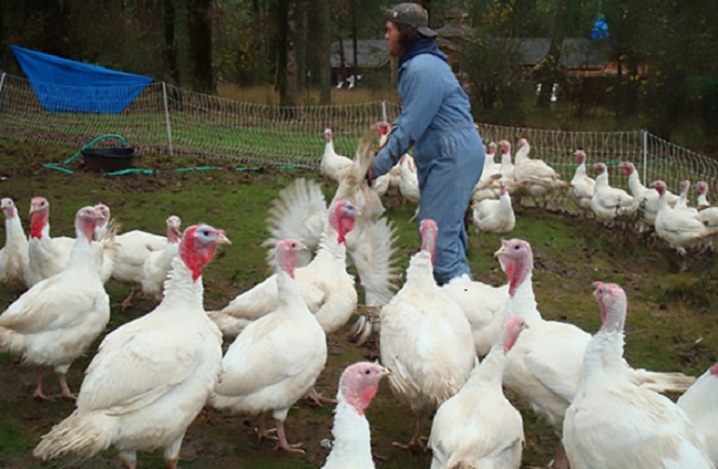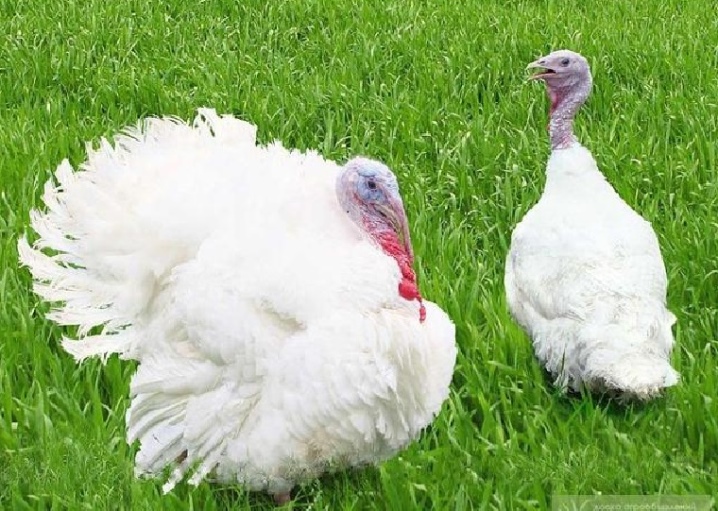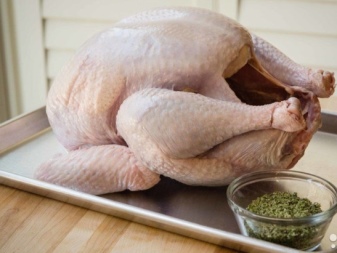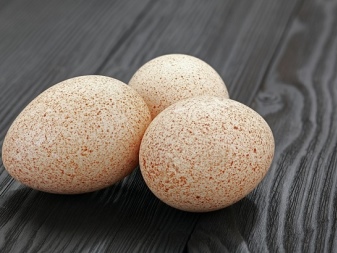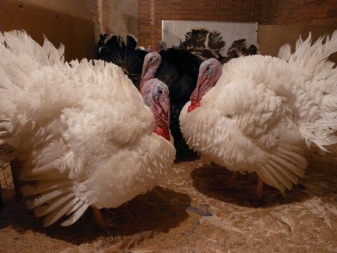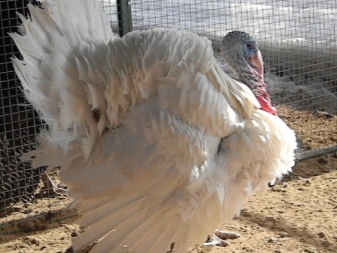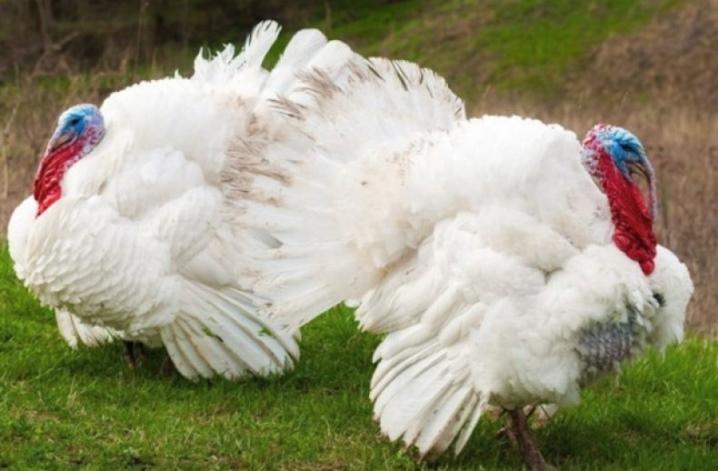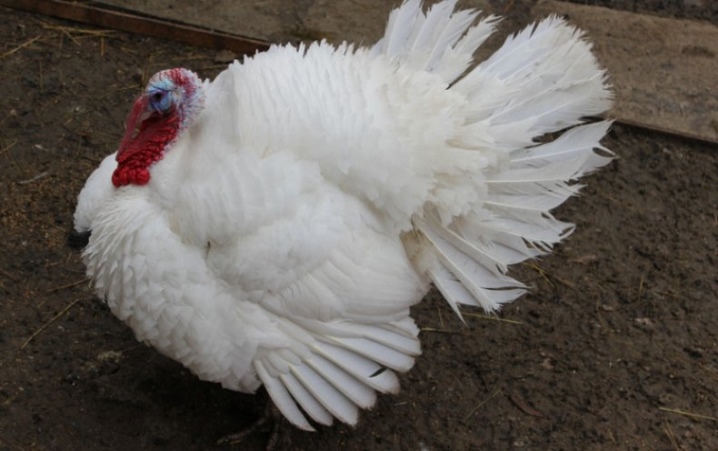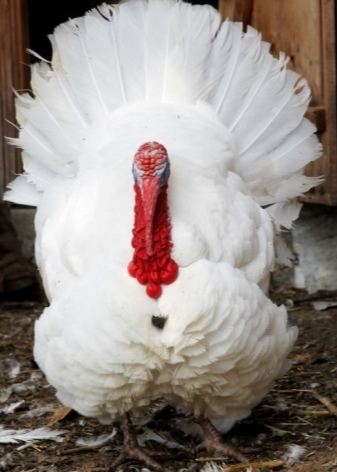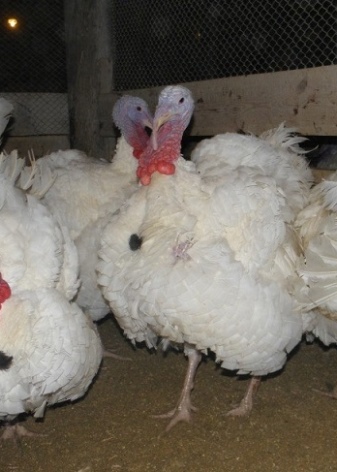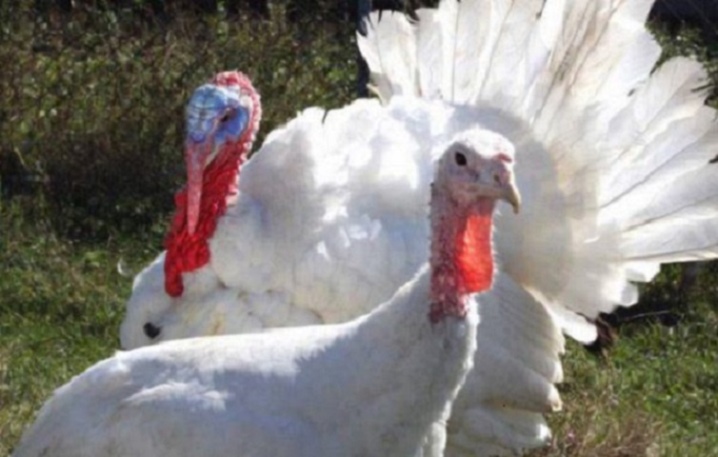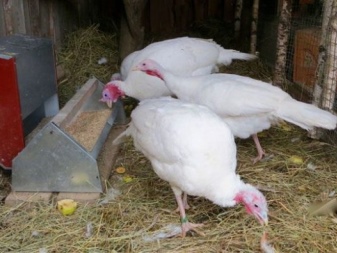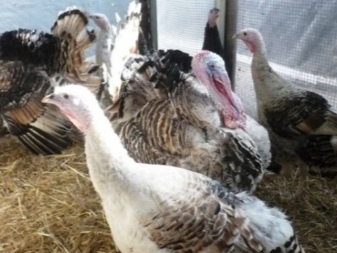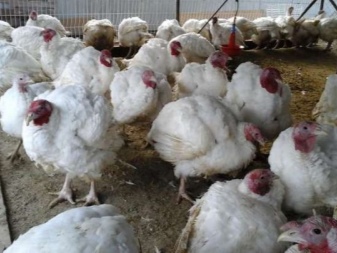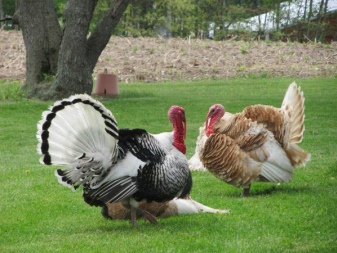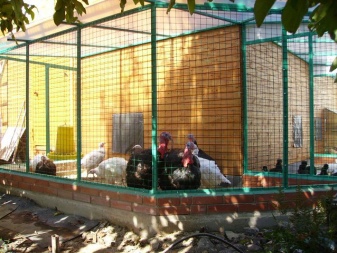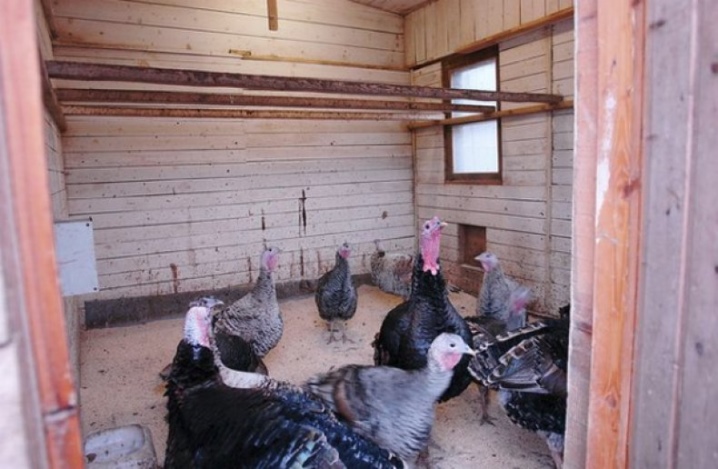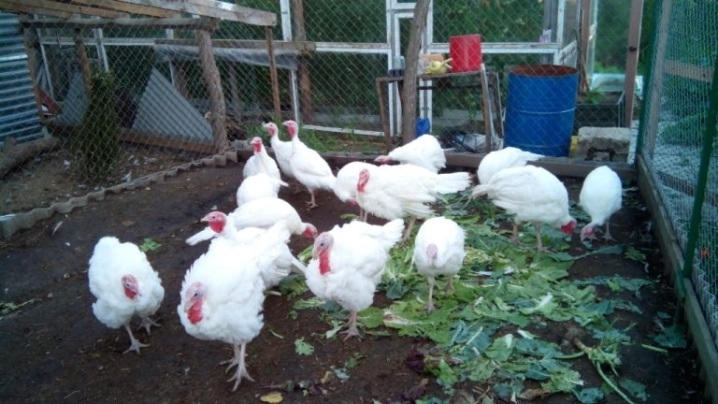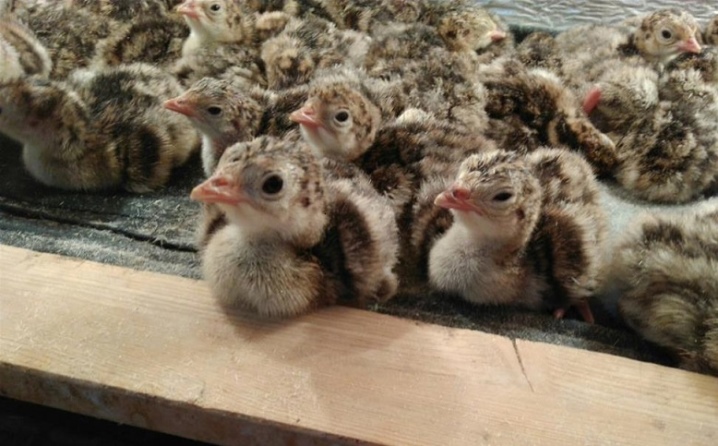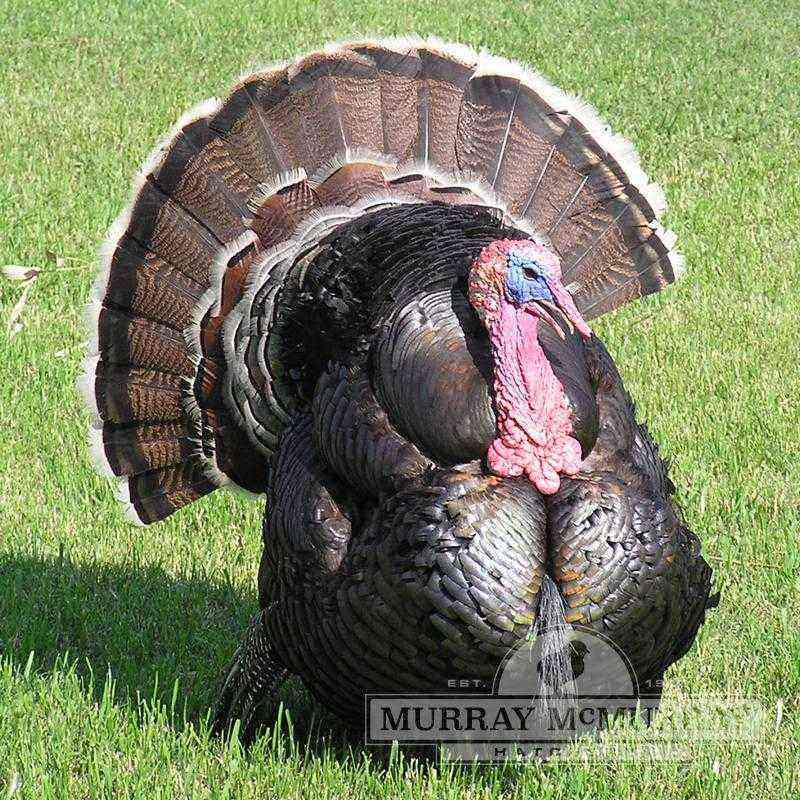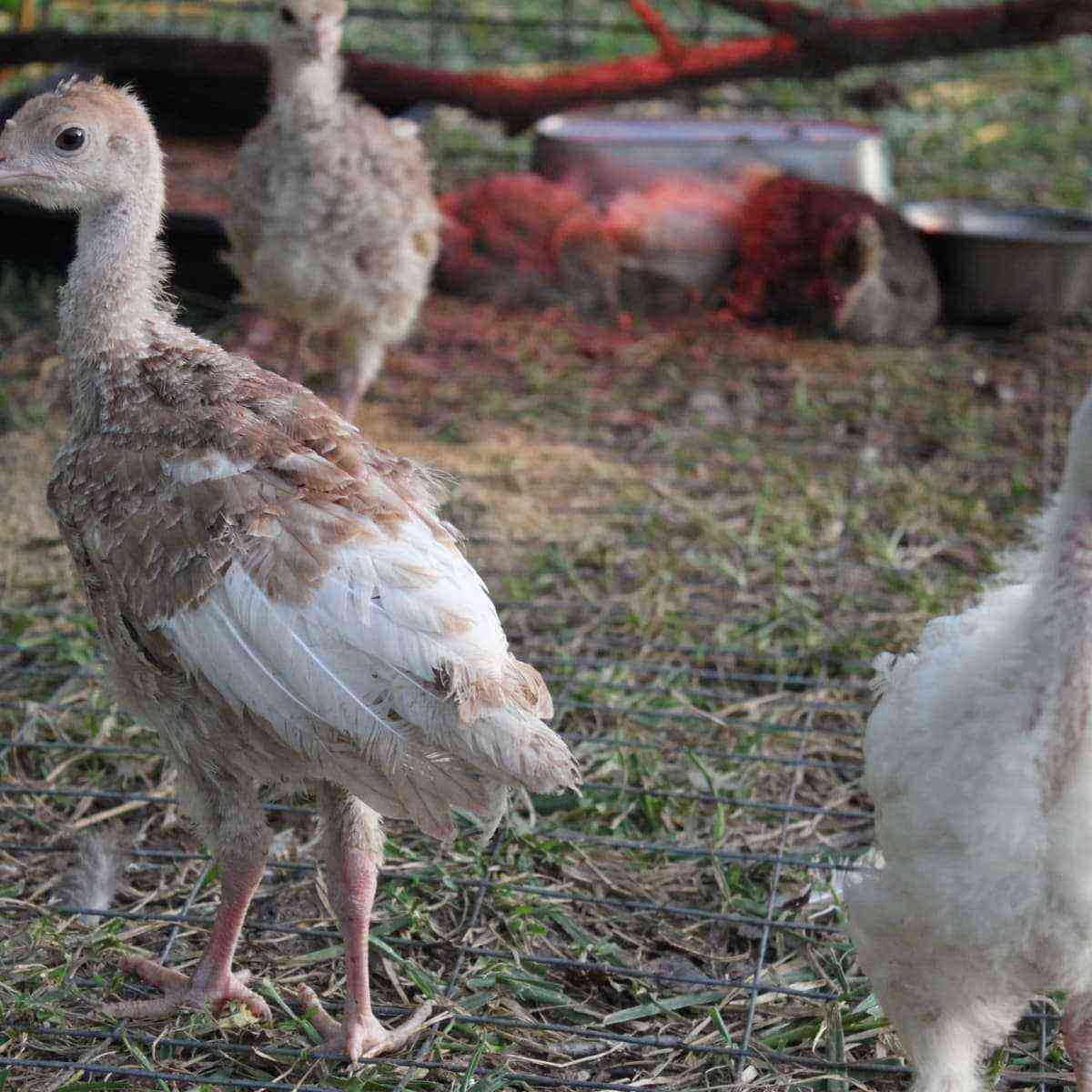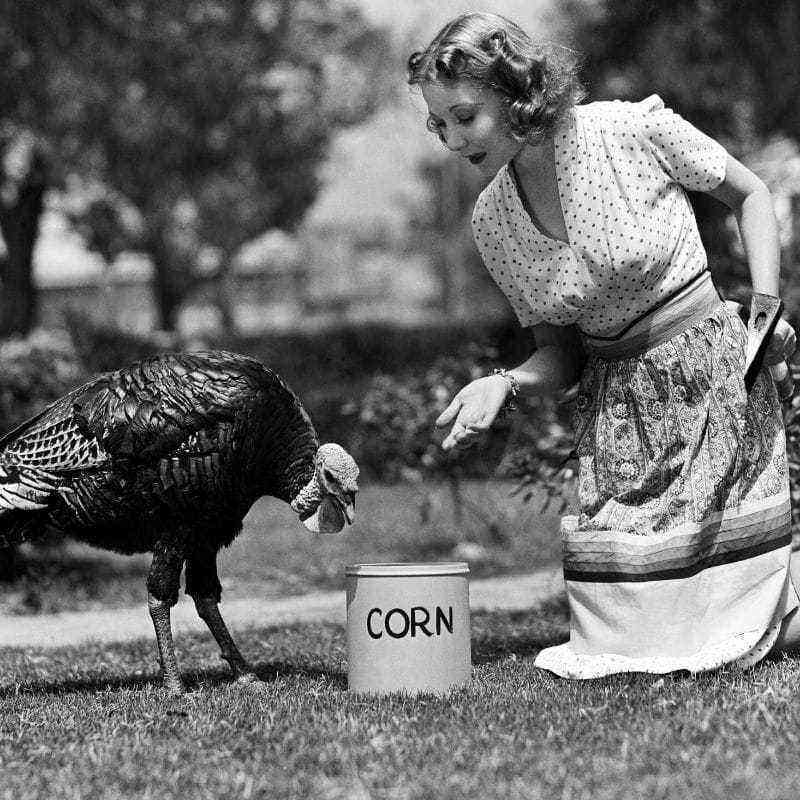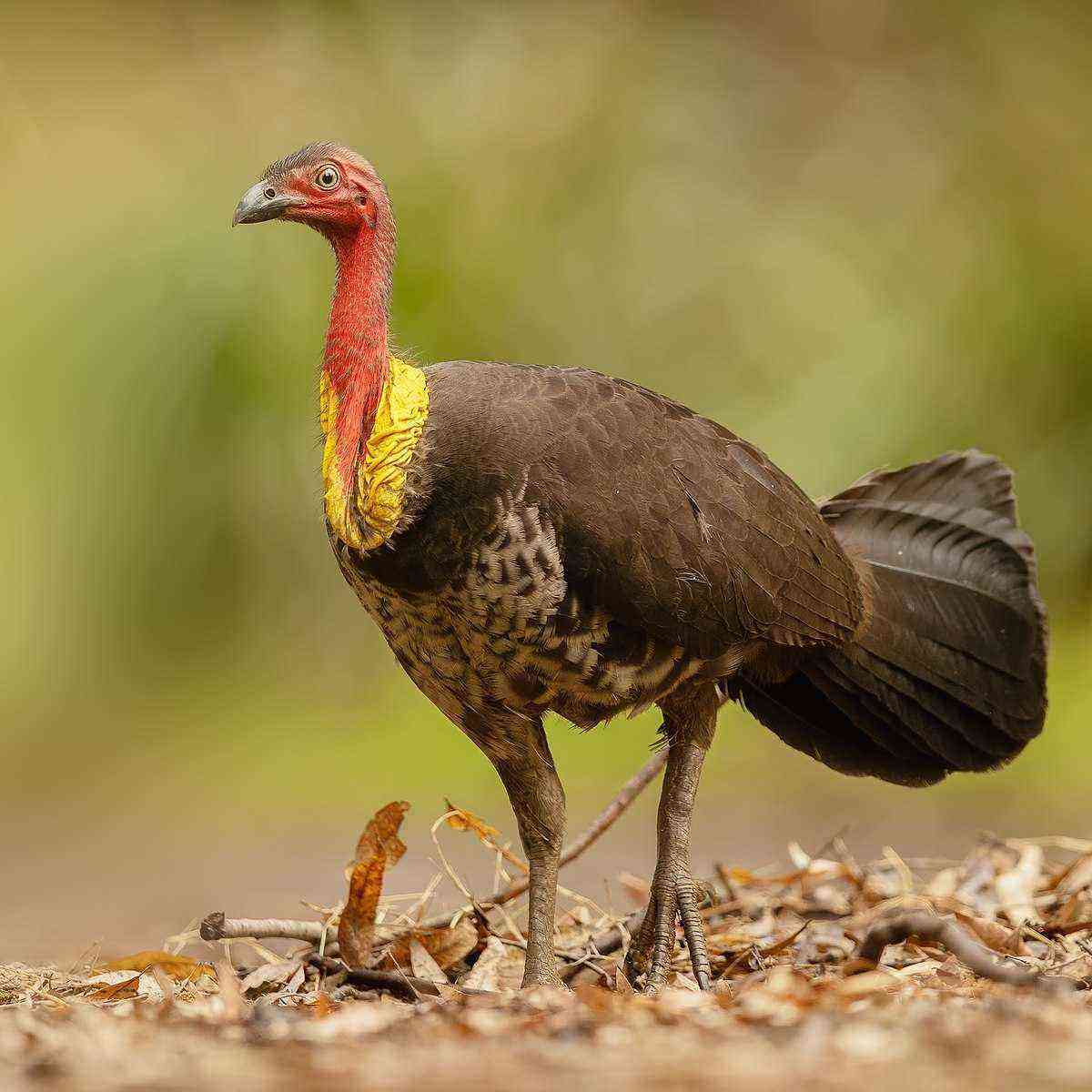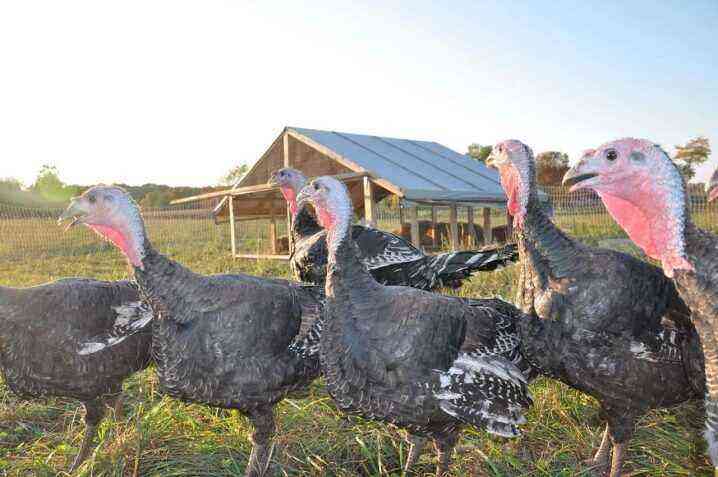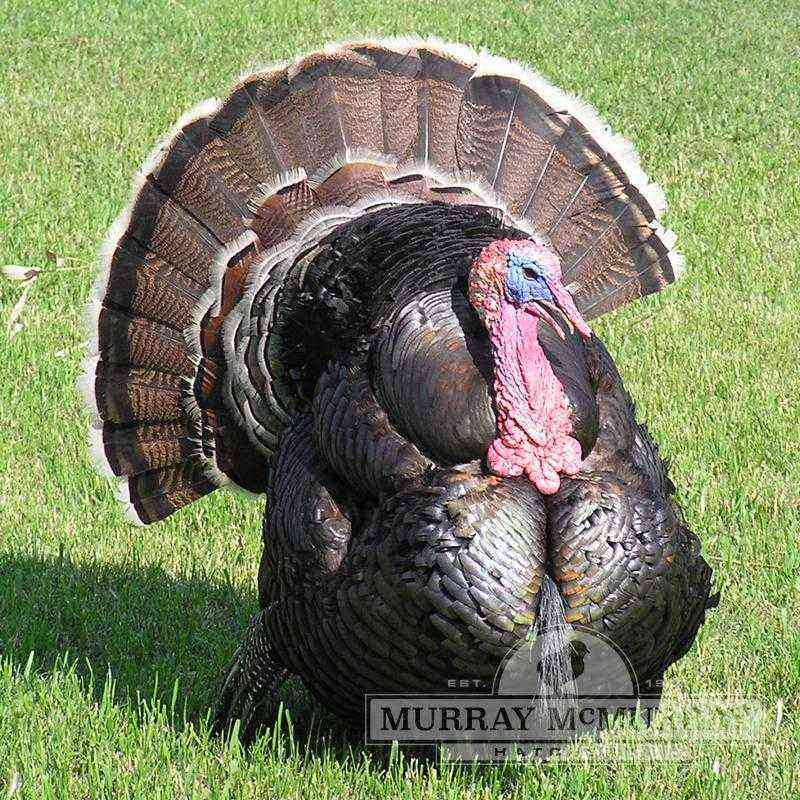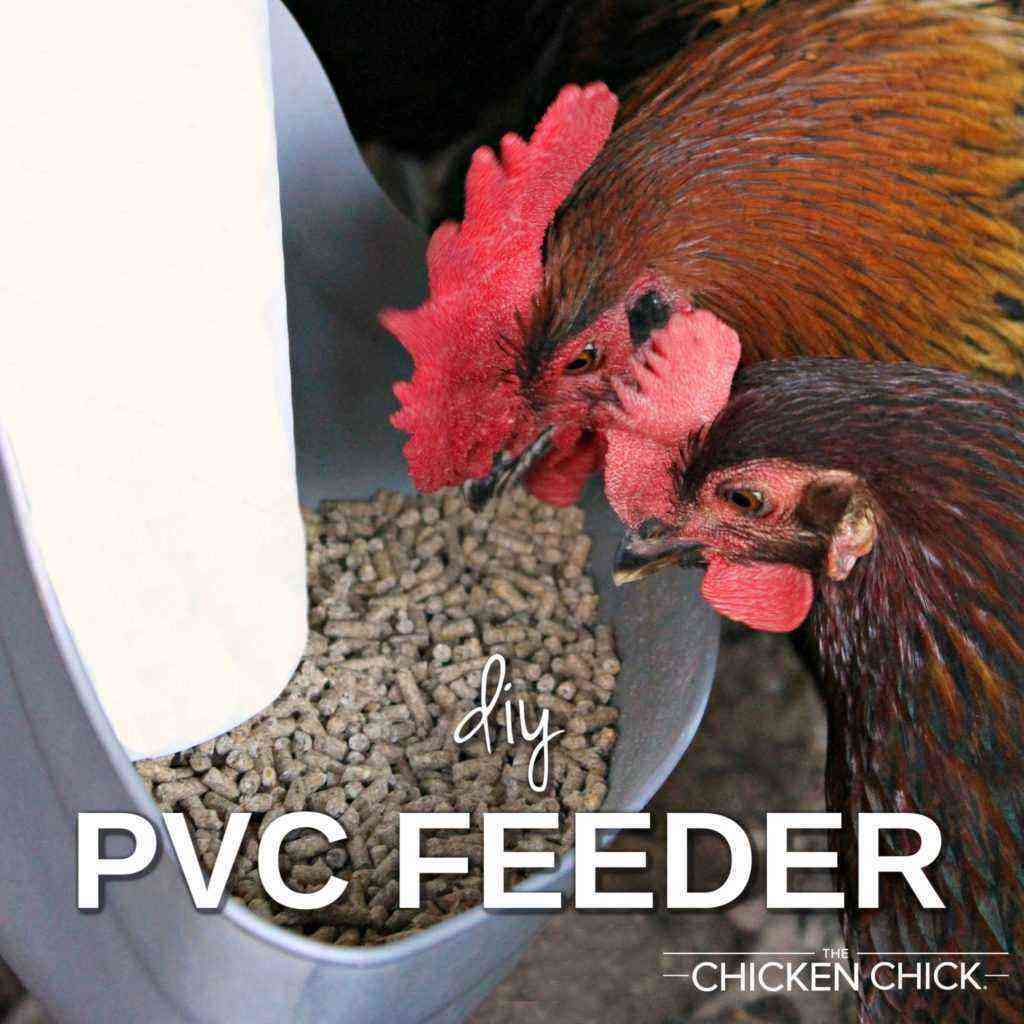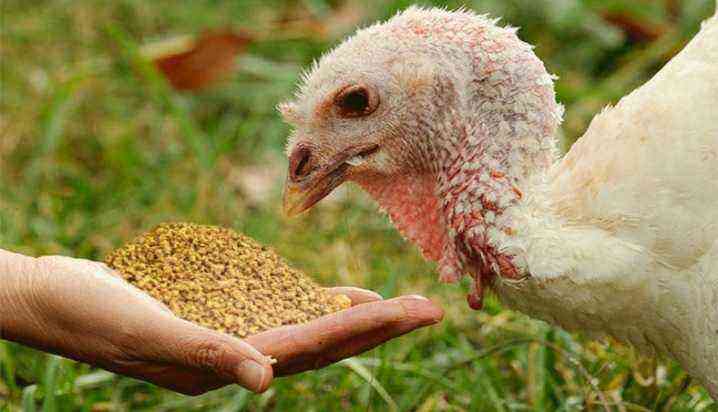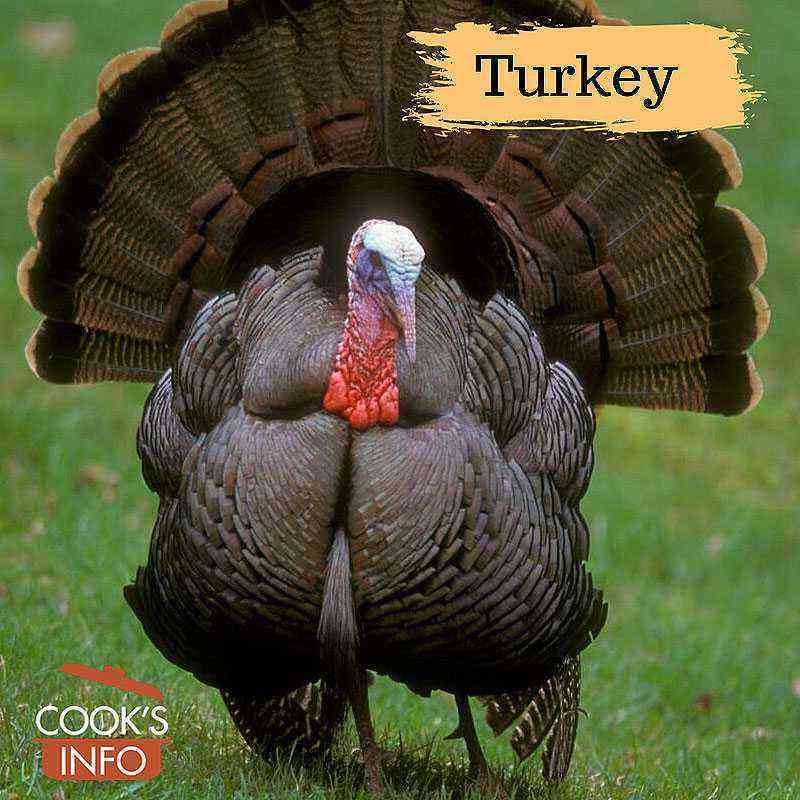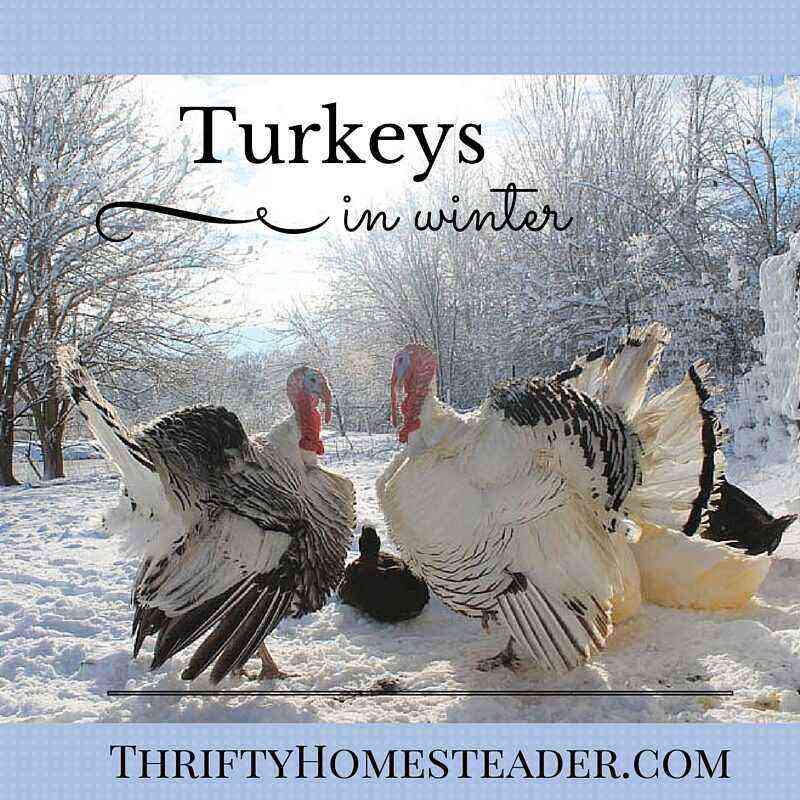Today, growing turkeys for many people is quite a profitable occupation. These birds are quite unpretentious in terms of rearing, and at the same time they will be an excellent solution if you are going to monetize the process of raising them, because they grow very quickly and after a short time they can be sent for sale. We will talk about various aspects of this process, as well as the characteristics of this breed of turkeys.
Features
Broiler turkeys are usually quite large. They have a large beak, under which is a red appendage, often called a chin. Broilers have a muscular body, which gives them the ability to fly over obstacles up to 3 meters high. And when running, their speed can be up to 50 kilometers per hour. At the same time, some farmers are not very fond of working with broilers due to the fact that they require specific nutrition. The fact is that broilers are the only type of poultry that can die if it contains synthetic food in its diet. So it is not surprising that turkey meat is highly valued on the market.
The mass of an adult broiler, according to the description, can reach from 20 to 30 kilograms, and if we are talking about females, then they can weigh up to 15 kilograms. The weight of a particular bird will depend on many factors, including feeding conditions, as well as the diet of the bird and its breed.
Productivity
It should be said that the main feature of this type of broilers will be a set of meat in large quantities and in a short time. One adult bird can produce up to 20 kilograms of pure meat. The weight of turkeys may vary depending on the category, of which there are three:
- easy;
- moderate;
- heavy.
Turkeys that belong to the first category weigh up to 10 kilograms, the second – up to 16, and the third – from 18. Here it should be understood that they are ready for slaughter at different times. The first can be slaughtered already at 16-20 weeks, the second – at 23-24 weeks, and the third – already at 16 weeks. It should be noted that a longer keeping of poultry can cause brittleness and deformation of the skeleton and adversely affect the quality of meat. Also, during the growth of the bird, you should carefully monitor its health so that it does not get sick.
In most cases, broiler turkeys are grown in order to obtain high quality meat. Although the ability to carry eggs in this case is also important, it is still secondary. Despite the fact that turkey eggs are quite large, a lot will depend on the breed of the female, because different breeds have a mass, the number of eggs per year and the start of laying will differ significantly.
Advantages and disadvantages
Now let’s talk about the advantages and disadvantages of breeding broiler-type turkeys. The fact is that the decision to purchase and further breed such a bird should be made as carefully and carefully as possible, after analyzing all the pros and cons. The reason is that these birds require the formation of a proper diet and certain care, although everything will depend on the goals of the owner.
If we talk about the advantages of breeding just such birds, then we need to name a few points.
- Dietary characteristics of turkey meat. In terms of organoleptic properties, such meat is superior to any other, including pork and beef. It contains many amino acids, it is well absorbed, and also increases the level of hemoglobin and will be useful for people of all ages.
- A large yield of meat from one carcass and its excellent taste.
- The possibility of obtaining huge turkey eggs, which are considered dietary and tasty.
If we talk about the shortcomings, then here we can note:
- serious financial costs for arranging a poultry yard – such a bird requires more space than ducks and chickens;
- the need to buy more feed and constantly monitor the quality of the diet;
- long period of growing poultry – up to 6 months;
- late puberty – usually about nine months of age.
At the same time, experienced breeders say that difficulties arise only at the initial stages of breeding, and they are quite easy to overcome. Soon, all financial and labor costs pay off.
Varieties
It should be said that the phrase “broiler turkeys” should be understood that not one specific breed of birds is represented here. There are several of them, and all of them are united by the possibility of rapid cultivation. This includes the following breeds of turkeys:
- hybrid converter;
- Big-6;
- Canadian broad-breasted;
- hidon.
Now let’s talk a little more about each of the mentioned breeds of turkeys.
Hybrid converter
The Hybrid Converter is a peaceful breed that looks rather heavy on the outside. Already at week 22, an individual of this breed will reach a weight of 25 kilograms and will be ready for slaughter. Of course, it is possible to make the individual gain a large mass, but, according to most farmers, this is no longer very profitable from a financial point of view. This breed is also called Indoostrich due to the fact that turkeys can run fast. By nature, birds of this breed are friendly and non-confrontational. They are calm and well trained. Converter meat is an important element of baby food, because it contains a complex of trace elements and vitamins. In particular, it has the whole group B, selenium and a large amount of protein.
If we talk about the external signs that distinguish this breed, then we should name the following:
- small head and enlarged chest;
- a large beak with a growth of red or scarlet;
- predominantly white plumage.
Canadian broad-chested
Canadian broad-breasted turkeys are among the fastest growing, and are ready for slaughter as early as 6 weeks, when the weight of the bird reaches 5 kilograms. The most intensive growth is observed until the third month of life, after which the rate of mass gain decreases. For these reasons, birds rarely live more than 15 weeks.
This breed of turkeys is distinguished by excellent disease resistance and good health. It easily tolerates low temperatures, and a high percentage of fertilization is also observed. Usually the plumage of such birds is black, with a bronze tint. An important feature of the breed will be that the maternal instinct in females is poorly developed, which is why an incubator will be needed to breed offspring.
Big-6
Another breed of broilers is BIG-6. It is considered interesting, in terms of rapid weight gain. For 4 months of life, an individual can “grow” up to 20 kilograms. According to poultry farmers, it is better to choose individuals with white feathers, as such birds have a more delicate skin and a better color, which will be important for the attractiveness of the carcass and increase consumer demand. Real birds of this breed have a small black spot in the chest area, which is a peculiar feature of the breed.
Despite the ability to lay eggs with a high fertilization rate, there is no guarantee what the offspring will be like, and whether the chicks will even look like their parents. The advantage of this breed is also fast growth and unpretentiousness to what they eat. Big-6 is grown both at home and in poultry farms. If we talk about appearance, then such birds are distinguished by shiny outer feathers, thick undercoat, large wings that allow turkeys to fly, a convex and fairly developed chest, powerful muscular legs, and a small head.
Hidon
A variety of hidon came to us from the Netherlands. These turkeys are also distinguished by such a rapid weight gain that by the 30th week from the moment of birth they are ready for slaughter. The breed has an extremely high meat productivity. Adult individuals can reach a mass of 20 kilograms, if we are talking about males. Females – up to 10 kilograms. The meat of these turkeys is extremely tender and dietary. The eggs of this breed are also very useful, their female can carry from 90 to 110 in one calendar year.
Conditions of detention and care
Now let’s talk about how to keep such birds in order to quickly carry out their mass gain. After acquiring turkeys, you should keep them in an incubator or turkey brooder for the first month, and only then transfer them to the general area. It should be noted that turkeys can be grown according to two methods:
- free grazing;
- content in cells.
The first option will be preferable due to the fact that the birds will have a more complete and natural diet, they will not start to rapidly grow fat, and the meat fibers will be thinner. This breeding option will be suitable for heavy and medium subspecies, but lighter turkeys can also be kept in cages. The age of slaughter will be minimal. Note that in the first months of life, turkeys should be grown especially carefully so that they do not develop any developmental abnormalities or diseases.
There are also many requirements for the poultry house; a lot of points should be taken into account during its construction. HLet’s start with the fact that broilers are not only large, but also strong creatures, and therefore the foundation of the poultry house must be reliable, and the walls must be strong so that the building does not collapse. Also, strong walls will not allow various predators to get inside: rats, snakes, and so on. 1 square meter of area should be allocated per bird. If there is not enough space, this will cause the birds to fight for territory among themselves and, as a result, cause injury to each other. In addition, this will negatively affect psychologically, and turkeys will be poorly oriented in space.
If we talk about temperature, then turkeys should be grown at rates of 18-20 degrees throughout the year. To get large birds, lighting should also be considered. It should be constant so that the length of daylight hours is about 14-15 hours a day. Also, a source of not only artificial, but also natural lighting will not be superfluous. Large windows can be used for this. In addition, a walking aviary should be equipped next to the poultry house, where it is worth releasing chicks more often. And regardless of the weather. This will significantly speed up the weight gain process.
You also need to think about dividing the space into zones, which is very important for turkeys. For example, in a separate area there should be a feeder with food. The capacity for it should be selected based on the fact that 25 centimeters of its area should be allocated to 1 bird. A rack is also being made with containers where wet food and feed will be poured. There should always be fresh water here.
It is better to cover the concrete base with bedding made of natural materials. They should perfectly regulate the temperature and absorb moisture well. You also need to build a perch. It is made from logs, which are rounded at the ends. In addition, the poultry house should have a seating area. It is done in the depths of the building, where the light does not reach. A waste tray should be installed under the perches, which will greatly facilitate daily cleaning. It is daily, since ammonia vapor, which is contained in feces, can simply kill birds during sleep.
Be sure to make a walking area in winter, located between the dining room and the bedroom. The most important attributes of this zone will be chalk, pools filled with ash, and shell rock. If you want to hatch chicks, then you should determine how this will happen: by laying it on females or using an incubator. If using the first option, then you need to equip the area with nests with the following calculation: 1 place 60×60 centimeters in size for 4 individuals. Also, the poultry house should have an isolation zone where especially conflicting or sick birds will be placed. In general, as you can see, there are a lot of requirements for the conditions for keeping turkeys.
Feeding
Now let’s talk about how to feed turkeys so that their daily rations contribute to growth as much as possible and help to gain weight faster. The first two weeks, turkeys need to be fed with special food, which is also called “zero”. It contains everything that is needed for a young and fragile body of a bird. After the specified period, you can switch to mixtures that are made specifically for chicks. It will not be superfluous to add chopped wheat and oats to food.
As a treat, you can give various mashes of bran, yogurt and boiled potatoes. The latter should be cut as finely as possible so as not to clog the airways of babies.
Chalk, crushed shells and river-type sand will be very useful for turkeys.
By 3 months of life, they already form a diet, which should include the following products:
- compound feed and oats – 10 percent each;
- corn – 10 percent;
- wheat – 50 percent;
- barley – 20 percent.
It is also necessary to give fresh herbs, which are useful for all poultry. It is best if it is chopped nettles, green onions, tops of various crops, cabbage leaves, dandelions. And in winter, all this can be replaced with coniferous branches or hay.
Breeding
As mentioned above, you can breed turkeys using an incubator or a turkey acting as a hen. But usually farmers prefer to incubate the eggs, because the hatchability will be higher. Eggs are marked when laying to avoid confusion during hatching.
Turkey poults are bought in special places. Quality can be affected by the following factors:
- reputation of the seller;
- how long has he been doing this;
- living conditions of parents;
- remoteness of the farm from the client.
It is best to make sure that the transportation of the chicks takes a minimum of time so that they do not die on the way.
Consider how exactly you can raise broiler turkey chicks.
- Broiler turkey poults are placed under the lamp until their feathers are dry and they rise to their feet on their own.
- After that, they should be placed in a large box or basket, and maintain a constant temperature of +25 degrees. Each individual should have 15 square centimeters of space.
- Daylight hours should be provided for 14-15 hours, as for adults.
- Boxes with chicks should be cleaned daily.
- In the second week, you can already let the broilers go outside, letting them run a little in the wild. And every day the time spent in the sun increases.
In general, as you can see, growing and breeding broiler turkeys is a rather complicated process that requires patience, knowledge, increased attention to detail, but the result is worth it.
For tips on growing broiler turkeys, see the following video.
